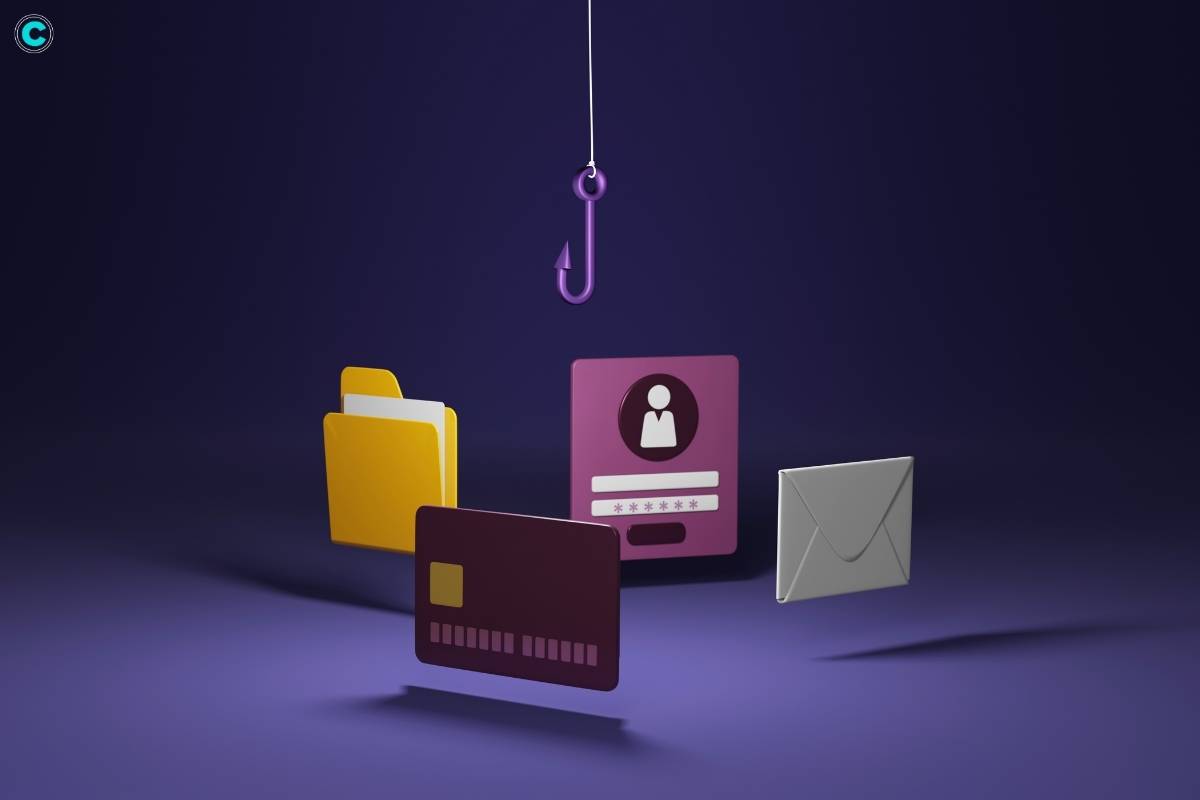In our digitally interconnected world, where the internet is an integral part of daily life, the rise of cyber fraud has become an alarming reality. From phishing attacks to identity theft, cybercriminals are constantly evolving their tactics to exploit vulnerabilities and compromise the security of individuals and organizations alike. In this article, we delve into the intricate web of cyber frauds, exploring common techniques employed by cybercriminals, the impact on victims, and strategies to fortify digital defenses.
Common Types of Cyber Frauds:
1. Phishing Attacks

Phishing remains a pervasive cyber fraud method where attackers use deceptive emails, messages, or websites to trick individuals into revealing sensitive information such as usernames, passwords, or financial details. These fraudulent communications often impersonate trusted entities, creating a false sense of legitimacy.
2. Ransomware
Ransomware is malicious software that encrypts a victim’s files, rendering them inaccessible until a ransom is paid to the cybercriminal. This type of cyber fraud has targeted individuals, businesses, and even critical infrastructure, causing disruptions and financial losses.
3. Identity Theft
Cybercriminals engage in identity theft by stealing personal information to impersonate victims for financial gain or fraudulent activities. This may include accessing bank accounts, opening credit lines, or committing crimes in the victim’s name.
4. Online Scams
Online scams come in various forms, such as fake job offers, lottery scams, or fraudulent online purchases. Cybercriminals leverage social engineering techniques to exploit trust and manipulate individuals into providing money or sensitive information.
5. Business Email Compromise (BEC)
Business Email Compromise (BEC) involves attackers compromising business email accounts to impersonate executives, employees, or business partners. This enables them to initiate fraudulent transactions, transfer funds, or gain access to sensitive corporate information.
Impact on Individuals and Organizations:

1. Financial Losses
The primary motive behind many cyber frauds is financial gain. Individuals and businesses may suffer significant monetary losses due to stolen funds, unauthorized transactions, or the costs associated with mitigating the aftermath of a cyber attack.
2. Reputation Damage
Cyber fraud can tarnish the reputation of individuals and organizations. In cases of data breaches or identity theft, victims may experience a loss of trust from clients, customers, or peers, impacting their credibility and relationships.
3. Emotional Distress
The emotional toll on individuals who fall victim to cyber frauds should not be underestimated. The violation of privacy and the stress of dealing with the aftermath can lead to anxiety, depression, or other psychological challenges.
4. Business Disruption
For organizations, cyber frauds can result in operational disruptions, loss of productivity, and damage to critical infrastructure. Ransomware attacks, for example, can paralyze entire systems, leading to downtime and financial setbacks.
5. Legal Consequences
Cyber fraud victims may face legal consequences, especially if their compromised information is used for criminal activities. Proving innocence and reclaiming one’s identity can be a lengthy and arduous process.
Strategies to Strengthen Digital Defenses:
1. Educate and Raise Awareness
Cybersecurity education is a powerful tool in the fight against cyber fraud. Individuals and employees should be aware of common tactics used by cybercriminals, recognize warning signs, and understand the importance of secure online practices.
2. Implement Multi-Factor Authentication (MFA)
MFA adds an extra layer of protection by requiring users to provide multiple forms of identification before accessing accounts or systems. This significantly reduces the risk of unauthorized access, even if login credentials are compromised.
3. Regularly Update Software
Keeping software, operating systems, and antivirus programs up-to-date is crucial for addressing known vulnerabilities. Cybercriminals often exploit outdated software to gain unauthorized access to systems.
4. Use Strong Passwords
Encouraging the use of strong, unique passwords is fundamental for protecting online accounts. Passwords should be a combination of letters, numbers, and special characters, and individuals should avoid using the same password across multiple platforms.
5. Invest in Cybersecurity Solutions
Organizations should invest in robust cybersecurity solutions, including firewalls, intrusion detection systems, and antivirus software. Regularly conducting security audits and assessments can help identify and address potential weaknesses.
6. Exercise Caution with Emails and Links

Individuals should exercise caution when receiving unsolicited emails or messages. Avoid clicking on suspicious links, refrain from downloading attachments from unknown sources, and verify the legitimacy of requests for sensitive information.
7. Regular Backups
Implementing regular data backups is an essential strategy to mitigate the impact of ransomware attacks. Backing up critical data to secure, offline storage ensures that even if systems are compromised, the organization or individual can restore their information without succumbing to ransom demands.
8. Incident Response Plan
Developing a comprehensive incident response plan is crucial for organizations to efficiently manage and contain the aftermath of a cyber attack. This plan should include clear protocols for identifying, reporting, and responding to security incidents, minimizing potential damage.
9. Collaboration and Information Sharing
Encouraging collaboration and information sharing within the cybersecurity community is essential for staying ahead of emerging threats. Sharing insights about recent cyber fraud attempts, tactics, and vulnerabilities enhances collective defense mechanisms and helps create a more resilient digital ecosystem.
10. Government and Regulatory Compliance
Adhering to government regulations and industry-specific cybersecurity standards is imperative. Compliance frameworks provide guidelines and requirements that, when followed, contribute to a robust cybersecurity posture, reducing the risk of cyber fraud.
11. Continuous Monitoring and Threat Intelligence
Implementing continuous monitoring systems and leveraging threat intelligence sources allows organizations to stay informed about evolving cyber threats. Proactive identification and response to potential risks enhance overall cybersecurity resilience.
12. User Training and Awareness Programs
Regularly conducting training programs for users on recognizing and avoiding cyber threats is a fundamental preventive measure. Educating individuals about the latest phishing techniques, social engineering tactics, and the importance of cybersecurity hygiene empowers them to act as the first line of defense.
13. Legal Recourse
Victims of cyber fraud should be aware of the legal avenues available to them. Reporting incidents to law enforcement agencies and pursuing legal action against cybercriminals can contribute to the global effort to combat cyber threats.
14. International Cooperation
Cybersecurity threats often transcend borders, requiring international cooperation to apprehend and prosecute cybercriminals. Collaborative efforts between nations, law enforcement agencies, and cybersecurity organizations can enhance the effectiveness of global cybersecurity initiatives.
Conclusion:
The prevalence of cyber fraud serves as a stark reminder of the evolving digital landscape and the constant need for vigilance. As individuals and organizations continue to navigate the complexities of the online world, prioritizing cybersecurity measures is paramount. Through education, awareness, and the implementation of robust defenses, we can collectively work towards unmasking the shadows and fortifying our digital realms against the ever-adapting tactics of cybercriminals.
Also Read: Blockchain: Revolutionizing Industries and Transforming Transactions






